

| Crambinae moths in Nottinghamshire |
| ............... |
| The Crambidae covers a large number of moths, of which the Crambinae make up a good percentage. They are commonly referred to as Grass Veneers and even more often lumped together by moth trappers as 'Crambids'. They are slim moths in appearance, light brown or straw coloured, with narrow forewings and slightly larger hind wings. Most species typically rest head down on grass stems, from where they are readily disturbed during the day. | ||||
| ............... | ||||
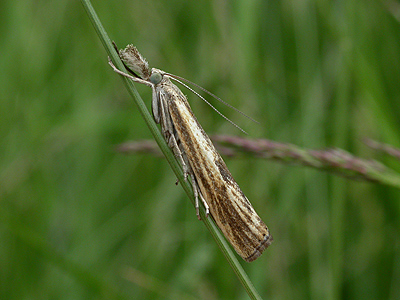 |
Anyone trapping moths, even within
the confines of a suburban garden, will regularly trap
large numbers of Grass Veneers. Operate a light trap
within an area of grassland, then literally hundreds of
Grass Veneers of several species will be attracted over
the course of a favourable night. Despite difficulties in the identification of some micro moths, none of the Crambids require dissection to determine the correct identification and with a little practice and familiarity, each species will become easily recognisable at light. Eventually, something slightly different will (or should) ring alarm bells and be kept for identification during daylight. As a rule, if something looks different or not quite right, keep it. |
|||
| ............... | ||||
| Such an
instance happened to ourselves back in 2006, when a Crambid
type moth arrived at the light trap we were operating in
meadowland at Red Hill, Eakring. We looked at it, let it
go, looked at it again and let it go. All the time, the
"this looks different" thoughts were running
through our heads, but no species was coming to mind. So
it was potted up, taken home and photographed the
following morning, turning out to be one of the best
migrants we have caught so far. It was the migrant Crambid,
Euchromius ocellea and the night itself provided
a number of other interesting migrants that arrived at
the trap. Nottinghamshire species However, trapping sessions like that are rare and E.ocellea is unlikely to be found in many Nottinghamshire moth traps, but there are a good number of resident species that will. Nottinghamshire probably has a Crambidae list typical of many inland counties, but information on what species occur and where in Nottinghamshire is rarely very forthcoming, so the following selection of species (including one very rare inland migrant) probably covers most of the species likely to be trapped within the county. Obviously other species can and will occur, depending on the type of habitat. Most grassy sites will have a decent range of species, but trapping at wetland or heathland sites, will attract other Crambids more specialised to that particular habitat. Occasionally some wetland species wander well away from their preferred habitat, so always expect the unexpected at any trapping location. Two heathland specialities are Crambus hamella, which can be found regularly on parts of Budby South Forest and Catoptria margaritella, which we have just one record of from Clipstone Old Quarter in 2011. Both these moths are unlikely to turn up in gardens. |
||||
| Chrysoteuchia culmella (Linnaeus, 1758) | Crambus pascuella (Linnaeus, 1758) | |
| Flight period: early June to late August | Flight period: early June - mid-August | |
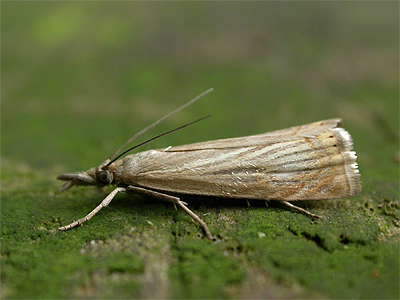 |
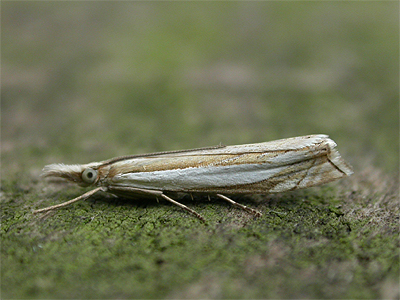 |
| Crambus hamella (Thunberg, 1788) | Crambus lathionellus (Zincken, 1817) | |
| Flight period: August | Flight period: early May to mid-August | |
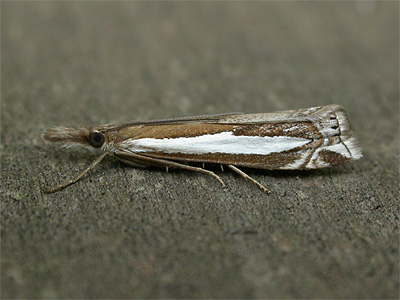 |
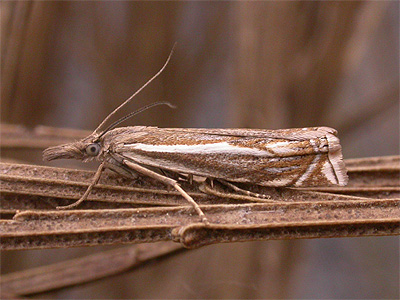 |
| Crambus perlella (Scopoli, 1763) | Agriphila selasella (Hübner, 1813) | |
| Flight period: early June - mid-August | Flight period: mid-July - late August | |
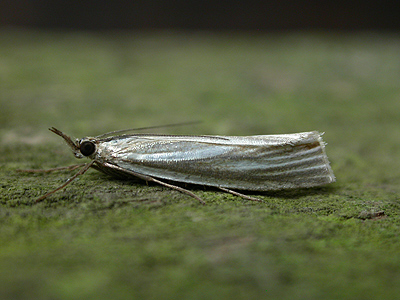 |
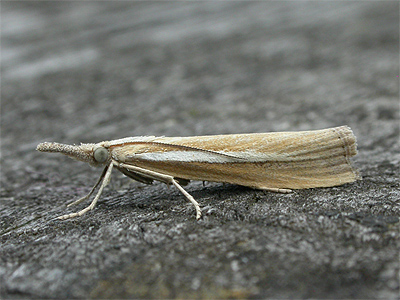 |
| Agriphila straminella (Denis & Schiffermüller, 1775) | Agriphila tristella (Denis & Schiffermüller, 1775) | |
| Flight period: mid-June - mid-September | Flight period: mid-July - mid-September | |
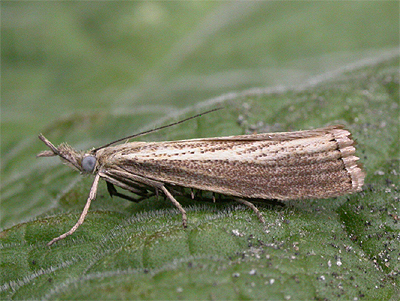 |
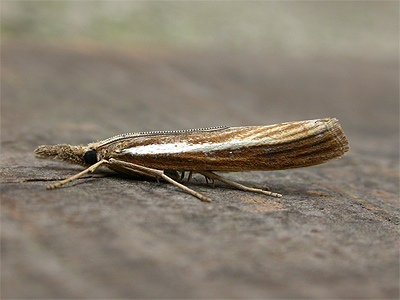 |
| Agriphila inquinatella (Denis & Schiffermüller, 1775) | Agriphila latistria (Haworth, 1811) | |
| Flight period: Late June - early September | Flight period: August - early September | |
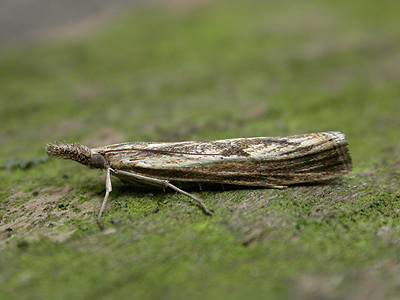 |
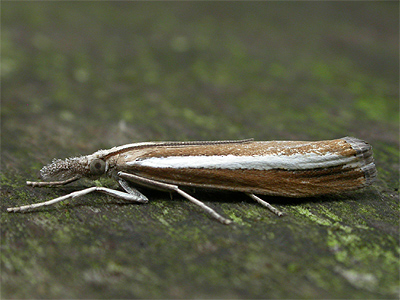 |
| Agriphila geniculea (Haworth, 1811) | Catoptria pinella (Linnaeus, 1758) | |
| Flight period: early July - mid-September | Flight period: late June - early September | |
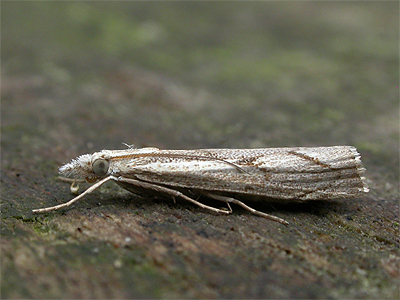 |
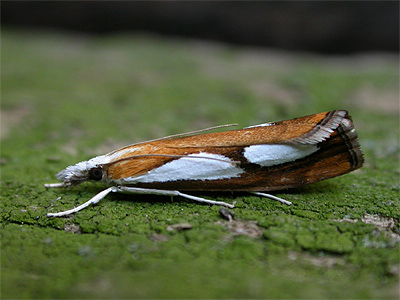 |
| Catoptria margaritella (Denis & Schiffermüller, 1775) | Catoptria falsella (Denis & Schiffermüller, 1775) | |
| Flight period: July | Flight period: early July - mid-September | |
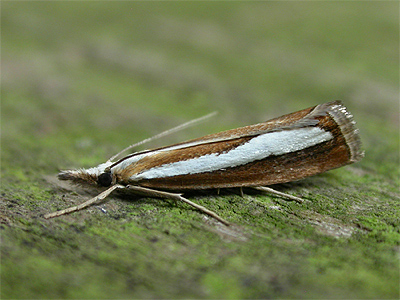 |
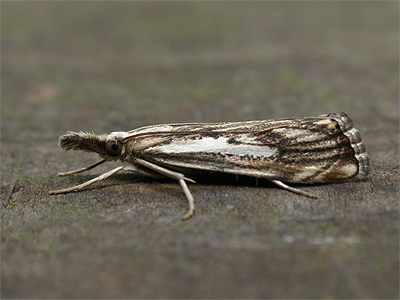 |
|
| Calamotropha paludella (Hübner, 1824) | Euchromius ocellea (Haworth, 1811) | |
| Flight period: August - September | Flight period: A rare migrant inland, September - October | |
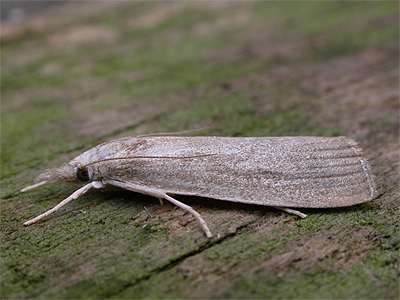 |
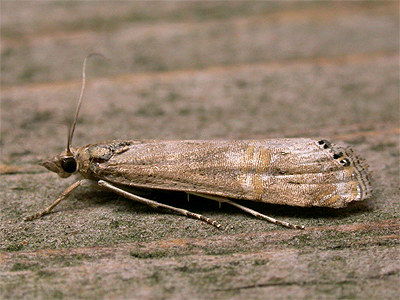 |
|
| ............... | ||||
| The
separation of potentially difficult Nottinghamshire Crambidae Many Crambids will often initially appear to be the same species and the subtle differences between some species, mean that identification can be tricky at times. General wear to the wings and loss of scales, can cause some of the more discernable markings to become a little obscure, but the main identification features usually remain at least partly visible, even in the most worn specimens. Fortunately though, the identification difficulties and potential possibilities of the commoner species, are reduced to one other 'like' species in four instances. Such difficult pairings would be Agriphila tristella and Agriphila selasella, Agriphila inquinatella and Agriphila geniculea, Chrysoteuchia culmella and Agriphila straminella and finally Crambus pascuella and Crambus hamella. Other species should not present any real problems and good quality photographs and daylight will always help to ID any Crambid. Catoptria pinella and Catoptria margaritella are easy enough to seperate when trapping at heathland sites and unlikely to cause any problems in a garden trap. Below are the Crambids most likely to cause identification difficulties that are known to occur regularly in Nottinghamshire. The most obvious identification/separation features are shown, which should help anyone identifying these moths for the first time. |
| ............... | ||||
| Agriphila tristella and Agriphila selasella | ||||
| Agriphila tristella (below left) is one of our commonest Crambids and often attracted to MV light in numbers. However, even in garden localities, it may be well worth checking the catch for Agriphila selasella, which now seems to be turning up more regularly, especially as more people are starting to identify micromoths. | ||||
| ............... | ||||
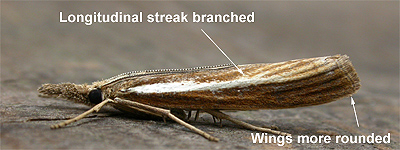 |
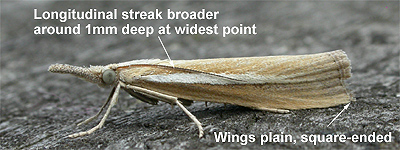 |
|||
| ............... | ||||
| The two species are similar, but once seen, A. selasella is relatively easy to pick out from A. tristella, with it's plainer, often sandy coloured wings and a broader white longitudinal streak of similar width than found on A. tristella. The wings at rest, also appear broader and more square ended on A. selasella. | ||||
| Agriphila inquinatella and Agriphila geniculea | ||||
| To be honest, this paring often produces the most confusion. Both species tend to prefer drier habitats, so are commonly encountered around the Sherwood Forest area. Worn specimens can p[rove especially troublesome, but even a very worn Agriphila geniculea (below right) will still show evidence of the sharply defined elbowed cross lines. This is always more clearly defined than on Agriphila inquinatella, which tends to have an inconspicuous cross line made up of a series of dark dashes or streaks. | ||||
| ............... | ||||
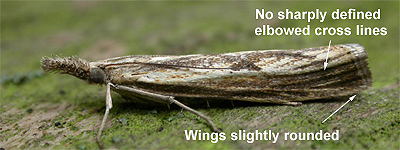 |
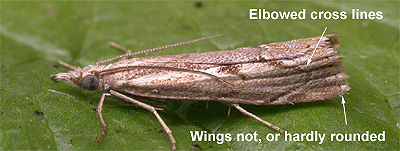 |
|||
| ............... | ||||
| Both species have a short, dark longitudinal dash, rather than a streak, but in Agriphila inquinatella, this dash is often much darker than in A. geniculea. Further seperation of the two can come from the less rounded wings of A. geniculea. | ||||
| Chrysoteuchia culmella and Agriphila straminella | ||||
| These are probably the two Crambids people will come across and should be the first ones to learn to identify. Chrysoteuchia culmella (below left) is the larger of the two species, but can often be worn and appear very plain and unmarked. It has two elbowed cross lines,similar to those found on Agriphila geniculea, but are nearly always less distinct. Agriphila straminella has no such cross lines, is smaller and can appear extremely plain and devoid of any markings of note. | ||||
| ............... | ||||
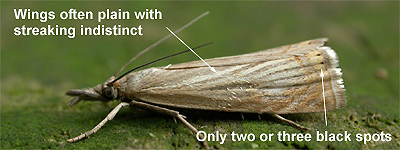 |
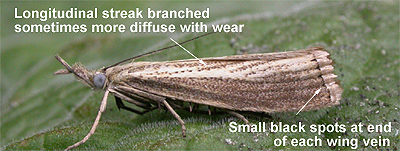 |
|||
| ............... | ||||
| The more well marked specimens of A. straminella will show a branched longitudinal streak and there is usually a row of small black dots at the end of the wing veins. | ||||
| Crambus pascuella and Crambus hamella | ||||
| Of these two similar moths, Crambus pascuella (below right) is the only one likely to be caught in most habitats. Crambus hamella is a heathland Crambid and the only site we are aware of is part of Budby South Forest. | ||||
| ............... | ||||
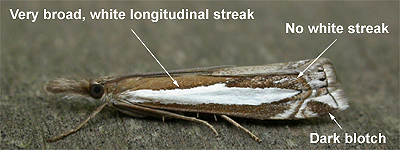 |
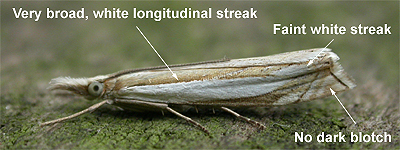 |
|||
| ............... | ||||
| Both species are well marked, having a broad, white longitudinal line. The ground colour of the fore-wings on C. hamella, seems to be much darker than even fresh specimens of C. pascuella. | ||||
| Other
potential confusion species Paying attention to Crambids arriving at (or in) the moth trap, may turn up the following confusion species. Donacaula forficella and Donacaula mucronellus are both wetland species, but as mentioned before, can turn up well away from the nearest suitable habitat on favoured nights. They are typically larger and obviously broader-winged than all the species dealt with so far. A more likely wanderer (in our experience) is Calamotropha paludella, another wetland species with relatively plain and obviously broader wings. Agriphila latistria and Crambus pratella both have produced just single records within the Sherwood Forest NNR and we know nothing about their present Nottinghamshire status. We have only recently recorded Agriphila latistria from a site east of Edwinstowe, but both are likely to turn up in the NNR again. A good Crambid look-alike is Sophronia semicostella (Gelechiidae) but is another heathland species, found for the first time on Budby South Forest a couple of years ago. |